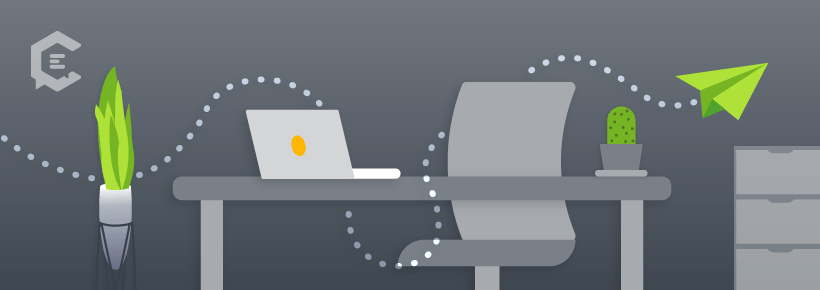The freelance lifestyle is coveted — no boss, a short work week, mid-week Instagrammable vacations that don’t require you to submit PTO for approval! What’s not to love?
There are a million reasons to go freelance… and a million articles telling you to go for it. This article isn’t one of those. But it’s also not an article to talk you out of going full-time freelance either.
For some context, I’ve been a writer (in that I’ve been writing for pay) for about 10 years.
I’ve worked at magazines and for agencies during that period, and decided to go full-time freelance for a year just to test it out. There were certainly some major benefits, but after that year, I ultimately decided #freelancelife wasn’t for me, at least in the long term.
So, this is a “follow your dreams, but…” article; a voice of practicality and reason; a game plan for the risk-averse who might be considering full-time freelance but want the whole story before they dive in. It’s an appendix or sequel to Gregg Rosenzweig’s article. It’s a hard plunge to take and knowing what you’re getting into is important.
Ready to jump into freelance life? Read this reality check first:
Freelancing kind of loses its “let down your hair” vibe when you consider the behind-the-scenes hustle. But it’s super important to consider these tasks, as they’ll take much of your work time.
You’ll have to wear a lot of hats.
You might be attracted to freelancing because you like writing (and making a little extra money on the side) but freelancing full-time isn’t just writing. It’s running a business. It requires you to wear a lot of hats — like accountant, sales, accounts payable and receivable and graphic designer.
If you’ve never taken a business class or don’t give a rip about anything except for the writing part, you still have to keep up the business side, or pay someone else to do it.
Working from home takes discipline.
Isn’t the point of freelance life that you have control of your own schedule? Well, yes. But that doesn’t mean you never have to buckle down and bang on your keys to pay the rent.
It’s tempting to stay in your PJs, wake up slow with coffee, grab lunch with a friend or see a movie mid-day — and there are certainly days for this — but the majority of your days will need to be planned and you’ll have to hold yourself accountable to deadlines in order to bring in enough income.
The learning curve is high.
Even if you’re good with time management, it’s hard to know right off the bat how much you can do every day. You’re not just dividing the work by the hours you have available, you also must consider how long you can mentally and physically sweat it out. And how much do you have to charge to make the time profitable?
You can read a thousand articles about time management and setting rates (and many of these will be helpful) but until you know how much you can and want to do in a day, you can’t accurately forecast.
Freelancing requires the sacrifice of other benefits.
Don’t get me started on our health care system… but if you’re not working for an employer who offers coverage, you either have to budget to pay for it yourself or go without insurance. It’s not fair to have to trade health coverage for a flex schedule — but that’s where we’re at (so vote!).
You are responsible for your own paycheck.
There is something deeply comforting about having a corporation or employer write and deliver your paycheck to you every two weeks, no matter what. (Yes, I realize I’m speaking of established companies, not tiny startups.)
With freelancing, while you’re responsible for doing a good job, you’re not responsible for the business’s overall health, and come payday, dropping that responsibility means major peace of mind.
Going full-time is not an impulse decision
Some writers just quit their jobs and wing it with freelancing, assuming they will get enough work and be able to pay bills. I’m a little jealous of these people and at the same time, find the act wildly irresponsible. Don’t let your dislike for your current job push you to make a brash decision. Spend the time and effort to set yourself up for success.
Even if you’re a good writer, it’s unlikely you’ll go from never writing freelance to having a full book of business overnight. It takes time to find work that fits, platforms that properly showcase your work and clients and projects that pay enough to sustain the current housing market!
A game plan to go from full-time job to full-time freelance:
To mitigate the problem of not having enough business upfront, I worked for about a year to get all my typewriter keys in a row. Here’s what I did, and a game plan for you if you want to take a calculated approach:
6-12 months before:
Reach out to your network.
Nobody is going to send you work unless you tell them you’re a writer actively accepting work. Let your friends, family and professional network know you are taking on more freelance stuff and would like the chance to pitch some ideas. Even if someone sees your name now and doesn’t need any services for a few months, at least they’ll have you in the back of their mind as an option.
Foster relationships.
Make sure you’re on good terms with the companies or businesses for which you’ve written in the past and see what they’ve got in their pipeline. If their plan is to go bankrupt, and your plan is to write for them for the next five years, you’re in for an unpleasant surprise. Be sure you’re on the same page, and make sure they know you’re wanting and can take on more work.
Be busy.
Since you’re not the daredevil to quit your job on a whim, you will need to write after work and on the weekends. Sure, you’re tired when you’ve sat at a computer all day long and then need to come home to work on an article, but if you don’t keep both gigs going, you won’t have a smooth transition from full-time job to full-time freelance. Companies don’t give work to writers they don’t trust and work with consistently.
Save money.
Put aside a percentage of your paycheck each payday as seed money. The amount will differ for everyone but any cushion will make getting started less painful. What if you don’t make any money for the first month of being “in business”? Remember, even if you’re working every day, your clients could take 30 or 60 days to pay you. Can you float the money until you get paid?
3-6 months before:
Pitch.
Reach out to companies you’ve worked for in the past or new clients you think would be a good fit. Test the waters. You’ll see how much interest is out there (or isn’t out there) and get a taste for how others react to your offerings.
Look into establishing a business.
States differ widely on how (and how expensive) it is to establish a business. In Arizona, where I live, it’s really easy, relatively cheap and there are no annual fees.
I established myself as an LLC for the following reasons:
- It saves me a little money on taxes (but does not require me to file an additional return outside my personal tax return).
- It limits my liability should some business decide to bring a lawsuit against something I write. This has not happened to me, but it does happen in real life.
- Some corporate businesses will only work through an incorporated party — meaning if you’re a contractor, you’ll have to either get jobs through an agency or establish yourself as a licensed business.
To do:
- Read about what it means to be incorporated and the difference between S. Corp, LLC and Sole Proprietorship.
- Visit your state’s Corporation Commission website to see what applying entails.
Get a website.
ClearVoice is bomb. And there are many other content marketing platforms that showcase freelancer work. But nothing can replace having your own website. URLs are $10-20 (unless you’ve got the same name as an A list celeb or someone running for office) and a template site like SquareSpace is $75-100 a year. It’s an inexpensive business expense and your best marketing and branding tool.
Open a business bank account.
Open an account as a secondary account attached to your current personal bank account, or go to a new bank and start the process from scratch. When you work for yourself, it’s pretty easy for business and personal expenses to melt together. A separate business account will help you keep the books separate. A business account doesn’t mean you can’t spend the money, it simply keeps your transactions separate, making it easier for your accounting and your taxes.
To do:
- Look into interest rates, account minimums and money mobility (how easy it is to transfer or pay others).
- Open an account and get a separate debit card for it.
Crunch the numbers.
How much will you need to charge per word or project? How much will you need to produce each month? How will you handle paying yourself? These are hard questions to answer when you haven’t really started. But plan some basic income goals. For example, my goal was to make as much freelancing in the first year as I was making when I was working full-time for someone else. This goal helped me establish my schedule, my rates and my workload.
To do:
- Figure out how you will pay yourself. (Carrie Nicholson does a great job explaining the options.)
- Calculate your estimated quarterly taxes.
A few weeks ahead:
Establish a couple of anchor clients and let them know your plan.
At this point, you should have reached out to clients you’re already doing work for to tell them you’re headed toward full-time freelancing and are taking on work and filling your schedule for the next few months. See if they’re interested in a monthly retainer. Though retainers may pay lower than one-off projects, they’re consistent clients who can get you through the months when business is slower.
Establish a templated, but editable contract.
Decide on a long-term plan for invoicing. (I used and continue to use QuickBooks Self-Employed. It’s the easiest tool I’ve found. It’s free for a year if you file your taxes with TurboTax.)
Set up your office.
You may be able to work from home on the occasional day sitting on your bed with your laptop. But if you’re remote every day, you’ll need an at-home office setup. This doesn’t have to be a whole room or a huge desk, but should be somewhere you’re comfortable and maybe have a desk or larger screen available.
Ultimately, I’m glad I went full-time freelance. I learned a lot about the writing business and I learned a lot about myself. After a year, though, when a well-paying full-time gig came my way, I took it because the benefits of working for a big company outweighed the perks of #freelancelife — for me. And it’s OK if they do for you too.







